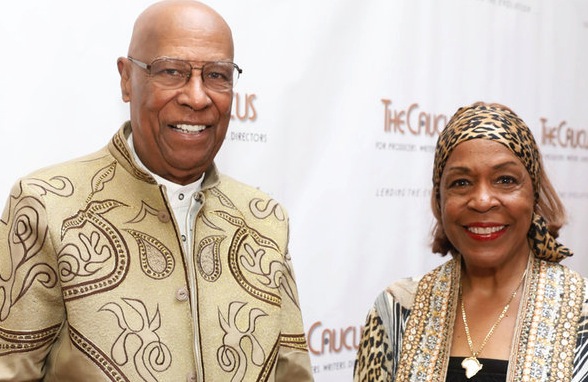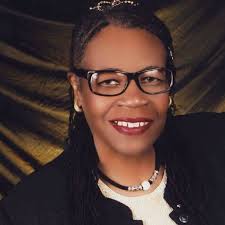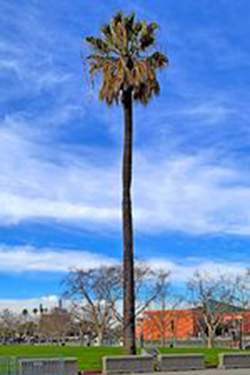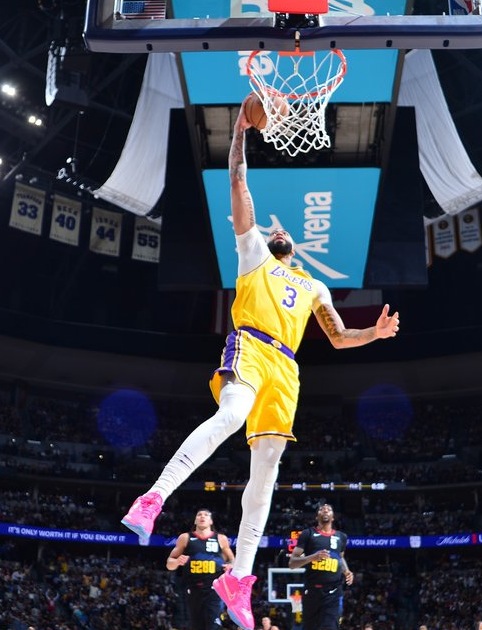By Darlene Donloe
Contributing Writer
The tag “dynamic duo” is not reserved just for superheroes.
It accurately describes professor Hildreth “Hal” Walker, Jr. and his wife, Bettye Davis Walker, both of whom have excelled separately and together in their respective fields.
On April 6, the Walkers will be the featured guest speakers at Santa Monica College’s A Scientist Spotlight & Career Discovery Event, entitled “Launch! – Air & Space, STEM, and the Arts.”
The program, to be emceed by Ivor Dawson, founder of the Traveling Space Museum, is a live presentation of Air and Space Adventures with invited panelists discussing careers in science, technology, engineering and mathematics as well as the arts, specifically featuring the careers and accomplishments of the couple. Inglewood Mayor James T. Butts is also scheduled to speak and will present the Walkers with a commendation.

Hal Walker is a laser scientist who was the first person to successfully fire the KORAD-1500 Ruby Laser to the moon in 1969 during the Apollo 11 Moon Landing.
A New Orleans, Louisiana native, who moved to Los Angeles, Walker was part of the mission on July 20, 1969, when American astronauts Neil Armstrong and Edwin “Buzz” Aldrin became the first humans ever to land on the moon. Walker led the team that used the Laser Ranging Retroflector to measure the distance between the earth and the moon for NASA.
After Armstrong and Aldrin set up an 18-inch-wide reflector mirror on the moon’s surface, Walker directed a laser beam from Lick Observatory in Mt. Hamilton, California, and made contact with the mirror.
That major achievement, now known as the Lunar Ranging Experiment, was the only interactive planetary experiment that took place for the first moon landing. It is also one of the Institute of Electrical and Electronics Engineers Milestones — No. 198 to be exact. Those milestones celebrate major accomplishments in the field of electrical engineering and reflect Walker’s importance in the field.
When the milestone was reported, somehow the name of Walker, a Black man, and his contributions were omitted. It would be 25 years before his role was discovered by a curator at the Smithsonian Museum, who just happened to be sitting across from the Walkers on a plane. At last, Walker’s contributions have been recognized.
His wife, a native of the Maryland/Washington, D.C. area, is an internationally renowned educational innovator, former university professor and researcher who has worked with students in Europe, West Africa, and presently, South Africa.
It was in 1997 when President Nelson Mandela invited the Walkers to establish and implement science and technology programs in townships and schools across South Africa. It continues to this day with 20 computer labs throughout the country. The couple also founded the first-ever chapter of the National Space Society on the African continent.
The Walkers, who have been married for 36 years, are co-founders of the African-American Male Achievers Network (A-MAN) STEM International Science Center and the Cape Town Space Society, headquartered in Washington, D.C.
Bettye Walker received a grant from UCLA for A-MAN, the first one ever to address the underachievement of students in inner-city schools, especially the boys.
“The grant was the only way we could implement it and make it relative to what our community is about,” said Walker, a peace global facilitator for Rotary Club in Cape Town, South Africa, and Los Angeles. “The idea was to give the youngsters every opportunity.”
“A-MAN was named after the 100 African-American men that came to work with my wife and me to put this organization together,” Hal Walker said.
A-MAN is dedicated to building the leaders and participants in science and technology for tomorrow. They share their legacy with girls and boy students and provide experiences that prepare them to attend higher academic institutions and begin fulfilling the nation’s leadership and technological needs.
I recently spoke to Hal Walker (HW) and Bettye Davis Walker (BDW), two very interesting and personable individuals, about their lives and the upcoming event.
DD: Professor, you were the first man to successfully fire the KORAD-1500 Ruby Laser to the moon in 1969. What does it mean to you to be the first man and the first Black man to do that?
HW: It reinforced my faith that God moves in our lives.
BDW: It took 25 years to get the recognition. They put the info about the laser in a magazine and his name wasn’t there. They said there wasn’t enough room in the article for his name.
DD: Does it bother you that most people don’t know a Black man played a significant role in space history — and that it was you?
HW: Yes, yes, it does. Much of the work I was involved in back then wasn’t highlighted for all the obvious reasons. It was not their job to highlight me, it was our job.
BDW: My answer to that is welcome to America. It’s our business to expose our people.
DD: How did you become interested in science and technology?
HW: I was a young boy in Louisiana. I was always interested in radio. I would listen and wonder how people could talk through a box. I couldn’t see them. When I was 7 or 8, my dad bought me a Buck Rogers ray gun for a Christmas present. I took it out and was disappointed until I pulled the trigger and saw flashes. Sparks became an attraction to me for the rest of my life. Back then, I and my friends built crystal oscillator radios. It led me to want to be in engineering. Then I became a scientist.
BDW: My interest started in high school. I was spending weekends doing scientific experiments at my chemistry teacher’s garage every weekend. I was a Wing Scout. Every day after school we went to technical school to find out why an airplane flies. Science and technology were always a part of me.
DD: Dr. Bettye, talk about how you got started doing work in South Africa.
BDW: We took 12 of our students in the STEM program to South Africa in 1997. We were privileged to meet Mandela. We are elated to recognize we played a part in the evolution of the continent, the sciences of the 21st century. We go there for three, four months each year.
That’s why we started the African American Male Achievers Network (A-MAN) Inc. STEM International Science Center. In order for all youngsters to have somewhere they can go and look up and see themselves as being special. Role modeling is everything. We have 100,000 students who have gone through the STEM A-MAN center over our 29-30 years. We have our program in Portland, Seattle, Baltimore, Chicago and Washington D.C.
DD: What can people expect to see and hear at the Santa Monica College event?
HW: This is a whole new world and a universe of opportunities is evolving. I’m such an advocate for the global interest. Be more of a global thinker and participant. It takes a mind that has an adventurous spirit in it.
BDW: Don’t let anybody steal your dream. Get a dream and keep your dream. The world is wide open. Go anywhere and be what you want to be. Be an explorer. The world is yours. Don’t put yourself in a box. It’s important to be inclusive. Not to know is bad, not to want to know is worse.
The Santa Monica College event is free and open to all students, faculty and media outlets from 11:15 a.m. to 12:35 p.m. April 6, in Santa Monica College’s Student Services Center Auditorium, 1900 Pico Blvd.
“The Q&A” is a feature of Wave Newspapers asking provocative or engaging questions of some of L.A.’s most engaging newsmakers or celebrities.
Darlene Donloe is a freelance reporter for Wave Newspapers who covers South Los Angeles. She can be reached at ddonloe@gmail.com.












